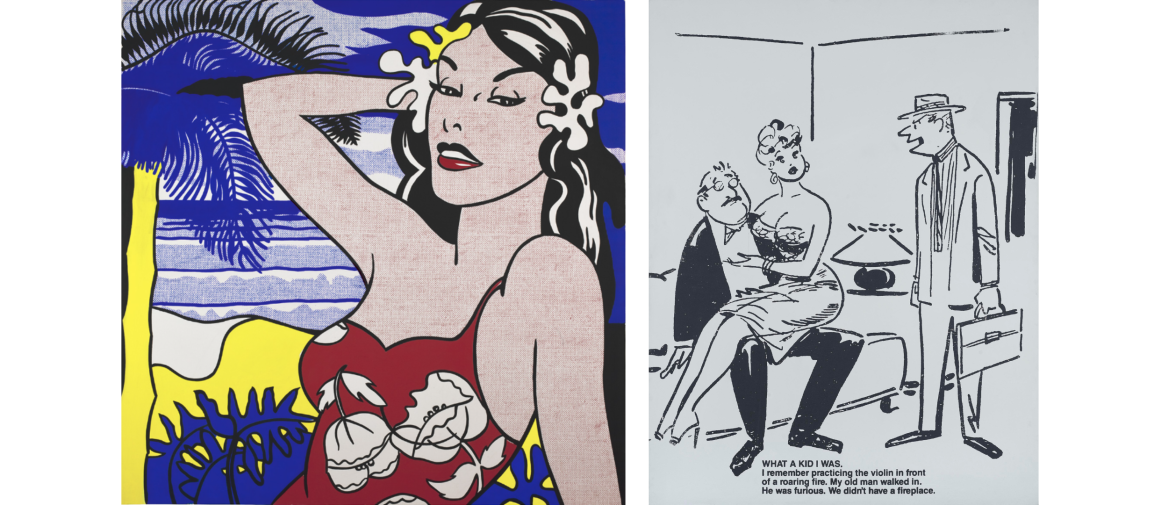
“Most of the time, instead of actual destinations and iconic sites, [Polke] was interested in the promises made and fantasies produced by the tourist industry and in how to represent and undercut them... to stage escape as something that was being promoted while remaining unattainable.”
Sigmar Polke is recognized as one of the most influential and innovative artists of the postwar era, and Untitled is a paragon of his inimitable practice. Known for his unrelenting experimentation across media and his sharp, often ironic interrogation of history, image-making, and cultural memory, Polke reshaped the landscape of contemporary art. Over a prolific five-decade career, he worked in painting, photography, drawing, printmaking, film, and installation, using unconventional materials and techniques to explore how perception, politics, and media intertwine. Aside from epitomizing this career-long conceptual rigor, the present work bears exceptional provenance, having being gifted to Barbara Gladstone by the artist. His work has been the subject of numerous major exhibitions and is held in the permanent collections of institutions worldwide such as the Art Institute of Chicago; The Broad, Los Angeles; The Metropolitan Museum of Art, New York; Museum für Moderne Kunst, Frankfurt; and Tate, London; among others.


Polke's 1996 painting Untitled reflects the artist’s signature approach. Executed in dispersion, a volatile, light-reflective medium he embraced in the 1990s, the work challenges the viewer’s ability to see and interpret. Polke’s embrace of chemical reactions, reflective surfaces, and translucent layering reflected what he called the “higher powers” of materials. In Untitled, the lacquer doesn’t simply protect the image, it obscures it, warping both surface and interpretation. At first glance, it presents as an old postcard or photograph: a halftone-style image of a woman, labeled in Fraktur script with the cryptic caption “Fräulein von Marsfeld bei unserer Palma Christi” (“Miss von Marsfeld by our Palma Christi”). This visual language evokes early 20th-century photography and botany, both of which were tied to colonial systems of classification and control. But under Polke’s treatment, the image resists such easy classification. The shiny lacquer surface distorts and reflects light, establishing a tension between recognition and alienation, image and surface, ideas central to his practice which link Untitled to his landmark Rasterbilder of the 1960s, where Polke rendered newspaper print dots by hand. Those early works questioned the authority of mass media and revealed how images could be manipulated to shape public perception. Untitled picks up this thread, extending the critique from consumer media to older scientific and colonial archival material. The inclusion of the Palma Christi (castor oil plant) adds layers of meaning: with properties both healing and toxic, the plant symbolizes contradiction and opposition, recurring motifs in Polke’s work. The woman, a fictional stand-in, represents the entanglement of femininity, exoticism, and power. As always with Polke, the meaning is fluid and elusive.

“When I came to the West I saw many, many things for the first time. But I also saw the prosperity of the West critically. It wasn’t really heaven… This attitude—looking at what is happening from a point of view outside—is still part of my work.”
This instability of image and meaning isn’t simply visual, rather, it represents the conceptual basis of the piece. Is the scene archival or invented, the woman a real subject or a symbol? Is the plant a site of healing, or danger, or both? Polke offers no clarity. Instead, the painting functions like an alchemical riddle, one that shifts with light, movement, and context. Polke’s legacy rests not solely in his artworks, but in his relentless questioning of how images function in culture, how they reflect, distort, and construct reality. In Untitled, this questioning continues. The raster effect, once hand-painted, now emerges through chemical surface play. The viewer is caught in a space between seeing and not seeing, between history and fiction. Untitled is less a summation than a continuation, another turn in Polke’s lifelong project of destabilizing perception. There are no answers here, rather an invitation to look harder, and to never fully trust what we see.






